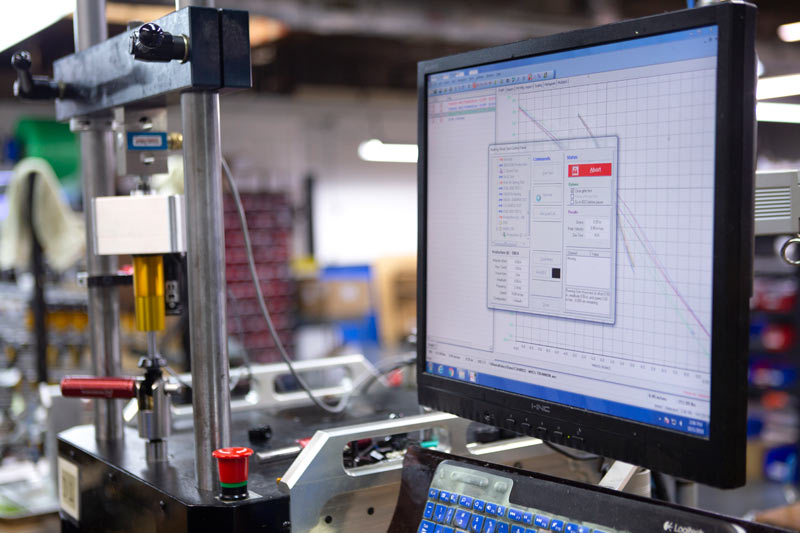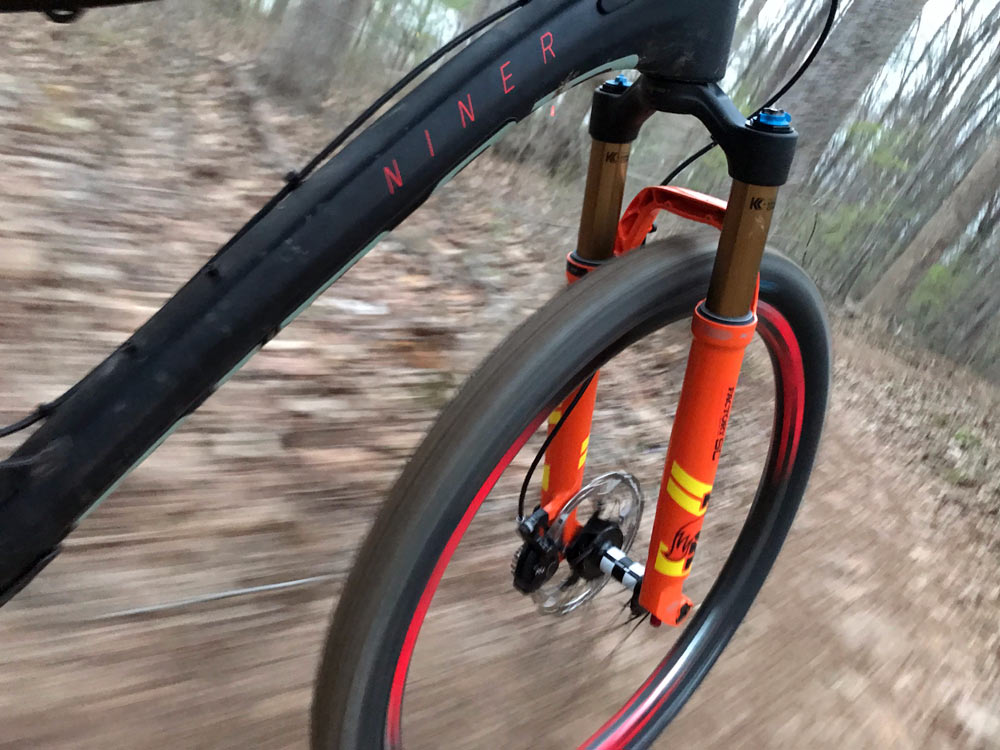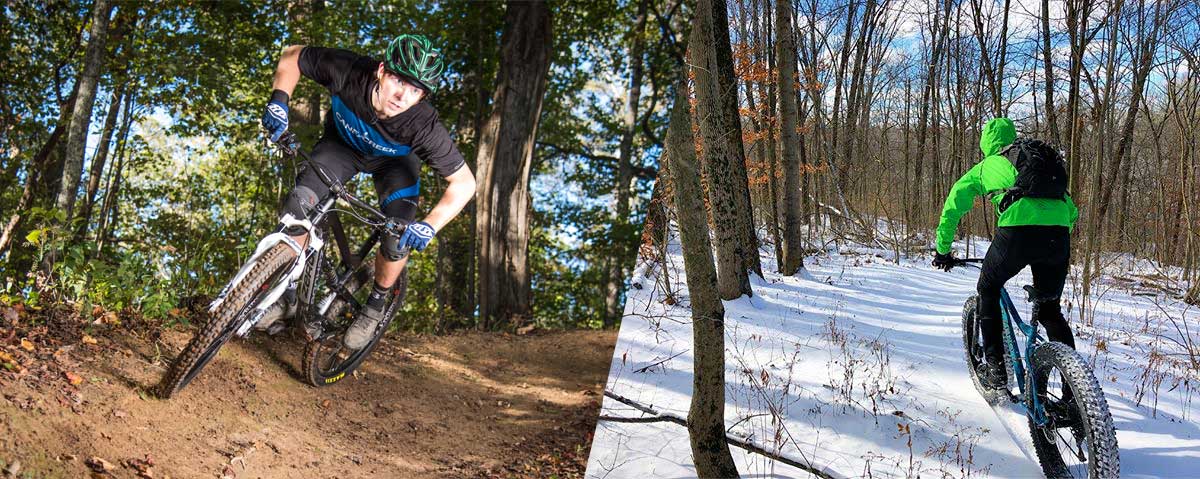Last week we covered how changes in air pressure and altitude affect your air fork and shock. This week, we check back in with Fox and Cane Creek to learn how changes in outside air temperature can affect your air suspension’s performance. Let’s dive right in, with answers from Bill Brown, FOX Bicycle Engineering Manager, and Cane Creek’s Marketing Coordinator Andrew Slowey (with input directly from their engineers).
BIKERUMOR: How does a change in ambient temperature affect suspension performance?
FOX: Pressure and temperature are directly proportional and related by the ideal gas law. For example, an increase in shock air spring temperature of 40ºF will increase the pressure in a shock by 20psi. Volume also influences the pressure change with temperature, the larger the volume the less effect temperature has on pressure. So a fork air spring is less sensitive to temperature changes (than a rear shock).
CANE CREEK: Ambient temperature affects suspension greater than ambient pressure for two reasons.
1) Ambient temp will affect how much cooling your shock will get. With a very high ambient temp the shock will not cool nearly as well, this could result in a lost of performance due to oil degradation (in extreme conditions).
2) According to Ideal gas law (PV=nRT), changes in ambient temperature will affect your suspension. Although your suspension is a sealed rigid system, as outside temperatures rise or lower so will the temperature inside your air can. When the ambient temperature (T in the above equation) rises but everything else stays constant the equation needs to be balanced so P (pressure) must increase as well.
* It is important to note that for a rough estimate every 10 deg F will change the pressure ~ 1 % so the temperature changes must be very dramatic to be detected by the rider.

BIKERUMOR: How much of a change in temperature does it take for the average rider to notice a change in suspension performance?
CANE CREEK: The temperature change would have to be very drastic to cause the average rider to notice a degradation of shock performance (on a well maintained / serviced shock).
FOX: We choose not to answer this one due to giving away proprietary information.
BIKERUMOR: Can you illustrate the answer to question #2 with numbers?
CANE CREEK: Ideal Gas Law really comes into effect with mountain bike suspension while setting your suspension up. Let’s say for example you decide to ride on a cold Colorado winter day, but you set your sag inside your nice comfortable house (~75ºF). Then you ride out of your garage into -5ºF, at this point the change in ambient temperature is 80 degrees which will change the air inside your shock by 8%.

BIKERUMOR: How much can the internal air temperature change during 3 minute downhill run on something like a typical EWS race course? What about in a 10 minute run?
FOX: For air shocks you could expect a 30º–35ºF increase in air temperature over a 3-5 minute run (DH or EWS). We see shocks reach steady-state in a 3-5 minute run so going longer will not heat the shock up more. Forks’ air springs have less temperature rise because they are isolated from the heat generated by the damper.
CANE CREEK: It’s a difficult question to answer specifically because internal temperature change during intense descents can really range depending on the trail conditions, damper style (monotube vs. twin tube), ambient temperatures, and the use of “piggyback” oil reservoirs. A twin-tube damper shock with an external reservoir on a relatively smooth downhill might see only a slight increase in internal temperature over the course of even a 10 minute run while a smaller air shock on a much rougher trail would see a significant internal temperature increase even on a short run.
Your compression and rebound settings will also greatly effect how fast your shock heats up. The more you’ve got those setting stopped down, the more internal friction will be present. That’s not to say, however that you should ride your shock wide open strictly in the name of keeping it cool. High-end shocks these days are designed to handle long rides over extreme terrain and an increase in temperature is part of that equation. Often when your shock feels hot to the touch it’s simply a sign that it’s working.
BIKERUMOR: Other than situations where a rider may start at a low altitude (warmer) and quickly ascend (via lift, gondola) to much higher altitude (colder), or if they are rolling out of a heated home to ride in the cold (or vice versa), what situations do you know of that might contribute to a change in temperature that could affect suspension performance?
FOX: On shocks, the air spring is usually surrounding the damper. There is heat transfer from the damper to the air spring that causes the temperature of the air to increase.
CANE CREEK: Really any situation where extreme temperature changes take place is something that can contribute to a change in suspension performance or a need for a setup change. As explained in the answer to question #3 transitioning from a household temp to extreme cold in the winter is a common occurrence in some regions where riders need to take extra care during setup.

BIKERUMOR: Anything else riders should know about how temperature changes or temperatures in general (really hot, really cold) can affect their suspension performance?
FOX: Seals have a glass transition temperature; glass transition temperature is the temperature at which a flexible material becomes rigid and brittle, or “glass like”. For many seals this is well below freezing; -40º to -60ºF. However, seals will begin to stiffen as they approach this glass transition temperature. As seals lose their flexibility, they lose their sealability. The glass transition temperature of seals can be altered (lowered) by additives in the rubber. For some key dynamic seals we specify a certain type of rubber material to ensure good flexibility at low temperatures.
CANE CREEK: In general, your best performing suspension components are ones that have been maintained and serviced on a regular basis. Fresh oil will combat heat fluctuations better and new air/oil seals will help provide smooth action while maintaining a sealed system throughout your rides. This is one reason why manufacturers recommend the routine service at 50hrs.
The fun never ends. Stay tuned for a new post each week that explores one small suspension tech, tuning or product topic. Check out past posts here. Got a question you want answered? Email us. Want your brand or product featured? We can do that too.
